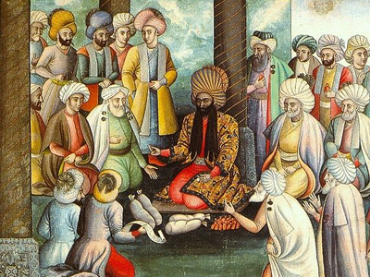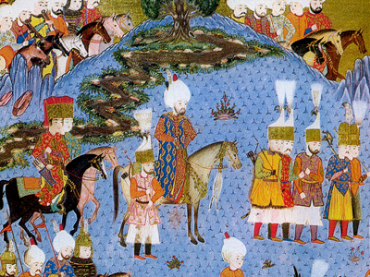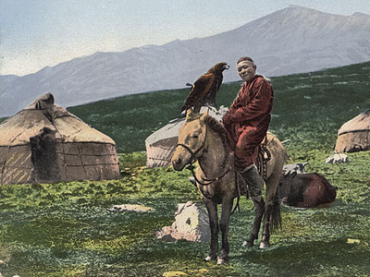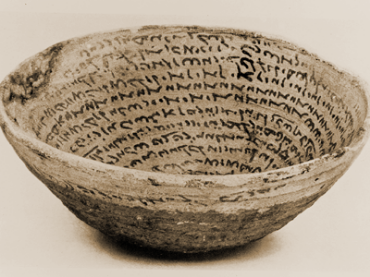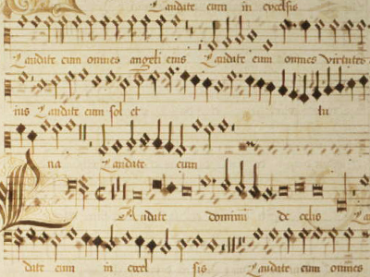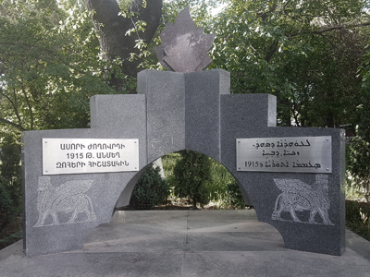History
The Early Bishops of Edessa
Early Eastern Christianity
Series: Analecta Gorgiana 154
ISBN: 978-1-60724-123-2
Originally delivered as one of the St. Margaret’s Lectures for 1904, the contents of this booklet are focused on aspects of the Syriac-speaking Church. Extracted from Burkitt’s book Early Eastern Christianity, the first lecture concerns the early bishops of Edessa. Starting from the basic difference between Eastern and Western Christian outlooks, Burkitt briefly sketches the early history of documented Edessa. Christianity appeared in the city between its sacking by the Romans and its incorporation into the Roman Empire around the start of the third century A.D.
$41.00
The Bible in Syriac
Early Eastern Christianity
Series: Analecta Gorgiana 155
ISBN: 978-1-60724-125-6
Originally delivered as one of the St. Margaret’s Lectures for 1904, the contents of this booklet are focused on aspects of the Syriac-speaking Church. Extracted from Burkitt’s book Early Eastern Christianity, the second lecture proposes a theory of how the Syriac Bible was compiled. Burkitt considers the role of the Peshitta, the Diatessaron, and the four Gospels and how their history at Edessa suggests that the Syriac Bible appeared.
$41.00
Early Syriac Theology
Early Eastern Christianity
Series: Analecta Gorgiana 156
ISBN: 978-1-60724-126-3
Originally delivered as one of the St. Margaret’s Lectures for 1904, the contents of this booklet are focused on aspects of the Syriac-speaking Church. Extracted from Burkitt’s book Early Eastern Christianity, the third lecture concerns the theology of Eastern Christianity. Burkitt provides a brief survey of the work of Aphraates, Philoxenus of Mabbug, Ephraim the Syrian, and Rabbula.
$41.00
The Portrayal and Role of Anger in the Res Gestae of Ammianus Marcellinus
ISBN: 978-1-60724-128-7
Ammianus’ treatment of the emotion of anger reveals as much, if not more, about his education, values, beliefs, personality, than it does about the people he writes about. This research contributes to a greater depth of understanding of the role of the key emotion of anger within the individual and collective lives of the characters as portrayed by Ammianus Marcellinus and how he uses them to influence the reader and colour his narrative.
$176.00
Marriage and the Sacraments
Early Eastern Christianity
Series: Analecta Gorgiana 157
ISBN: 978-1-60724-129-4
Originally delivered as one of the St. Margaret’s Lectures for 1904, the contents of this booklet are focused on aspects of the Syriac-speaking Church. Extracted from Burkitt’s book Early Eastern Christianity, the fourth lecture concerns the development of marriage and the role of sacraments in the early Syriac Church. Burkitt finds that marriage was not early regarded as a sacrament and the married faithful were not permitted the sacraments of baptism or communion in the early tradition represented by Aphraates.
$39.00
Bardaisan and His Disciples
Early Eastern Christianity
Series: Analecta Gorgiana 158
ISBN: 978-1-60724-130-0
Originally delivered as one of the St. Margaret’s Lectures for 1904, the contents of this booklet are focused on aspects of the Syriac-speaking Church. Extracted from Burkitt’s book Early Eastern Christianity, the fifth lecture explores Bardaisan and his unique contribution to Syriac Christianity.
$41.00
The Acts of Judas Thomas and the Hymn of the Soul
Early Eastern Christianity
Series: Analecta Gorgiana 159
ISBN: 978-1-60724-136-2
Originally delivered as one of the St. Margaret’s Lectures for 1904, the contents of this booklet are focused on aspects of the Syriac-speaking Church. Extracted from Burkitt’s book Early Eastern Christianity, the sixth lecture examines the ancient Syriac novel, The Acts of Judas Thomas. Embedded within that story is a Gnostic Hymn of the Soul, to which Burkitt pays special regard.
$39.00
Archaeologies of Water in the Roman Near East
63 BC – AD 636
By Zena Kamash
ISBN: 978-1-61143-421-7
Water is one of the most benign, and destructive, powers in the lives of all people, in particular in arid areas such as the Near East. This book provides an alternative way of thinking about the Roman Near East by exploring how its inhabitants managed and lived with their water supplies, especially in the wake of the Roman conquest. Through geographical, hydrological, and anthropological perspectives, this study aims to see how water can inform us about the nature of Roman Imperialism, the Roman economy, change and transformation in Late Antiquity.
$144.00
The Syriac Contribution to Arab Civilization
By Muhammad Abd al-Hamid al-Hamad; Introduction by Joseph Shabo
ISBN: 978-1-60724-149-2
The aim of this book is to demonstrate the movement of Greek thought into Arabic via the Syriac language. Al-Hamad devotes the four sections of this book to profiling four different authors who either wrote in Syriac or whose works were transmitted into Arabic via Syriac translations: Porphyry, John Philoponos (‘the Grammarian’), Jacob of Edessa and Dionysios of Tellmahre.
$142.00
The Role of the Syrians in the Arab Sciences
By Muhammad Abd al-Hamid al-Hamad; Introduction by Gregorios Yohanna Ibrahim
ISBN: 978-1-60724-150-8
This book begins with a discussion of the contribution of the areas of al-Raqqa (Kallinikos) and Diyar Mudar for translations into the Arabic language; it also covers the importance of Christian monasteries in the region of the Jazira for the history of translations into Greek.
$169.00
A Book of Poems and Essays
By Ghattas Maqdasi Elias; Introduction by Gregorios Yohanna Ibrahim
ISBN: 978-1-60724-151-5
This is a collection of poems and essays by Ghattas Maqdasi Elias, an important figure in twentieth-century Syrian Orthodox letters and education, also known as ‘Malfono Denho.’ The book contains writings previously published in books and journals as well as items published for the first time in this volume.
$148.00
The Beth Gazo in Musical Notation
According to the School of Edessa
Musical Notation by Nuri Iskandar; Introduction by Gregorios Yohanna Ibrahim
ISBN: 978-1-60724-152-2
The West Syrian Liturgy has come down to the present in three major traditions: that of Za‘faran, that of Sadad and that of Edessa. This book represents the culmination of many years of recording and effort, undertaken in both the Middle East and the US, aimed at preserving the complete Beth Gazo of Edessa in musical annotation.
$309.00
The Book of Treasures
By Severos Ya'qub al-Bartilli; Translated by Behnam Daniel al-Bartilli; Introduction by Gregorios Yohanna Ibrahim
ISBN: 978-1-60724-153-9
Among the works Jacob al-Bartilli has left us is this theological treatise, entitled The Book of Treasures, which has here been translated in its entirety into Arabic. The Syriac text remains unpublished and this Arabic translation has been executed by the Deacon Behnam Daniel al- Bartilli on the basis of three different manuscripts.
$182.00
The Diary of Mar Dionysios Georgios al-Qas Behnam, Metropolitan of Aleppo (1912-1992)
Edited with an Introduction by Gregorios Yohanna Ibrahim
ISBN: 978-1-60724-154-6
Nearly three years were spent assembling and editing this volume, which contains the diary of Mar Georgios Dionysios, the former Bishop of Aleppo. The diary covers the years 1943-1981 and offers a fascinating look at the day-to-day life of an important figure in the Syrian Orthodox Church over the course of nearly 40 years.
$242.00
Arabness and Islam in Arab Constitutions
ISBN: 978-1-60724-155-3
The question of the relationship between Arab identity and Islam is a pressing one for all Christian minorities in the Middle East. In this book, Syrian and Arab intellectual George Jabbur publishes a series of lectures concerned with examining the matter of Arabness, Arabhood, Islam, and political participation and belonging in the constitutions of the countries of the Arab world.
$135.00
Twelve Women in the Gospels
By Tuma al-Khuri; Preface by Gregorios Yohanna Ibrahim
ISBN: 978-1-60724-156-0
The Gospels mention that Jesus had twelve male disciples who aided Him in His earthly mission of proclaiming the Gospel. But were Jesus’ helpers only men? Convinced that women played an important role in assisting Jesus’ preaching and proclamation of the Kingdom of Heaven, Tuma al-Khuri has written a book, in Arabic, highlighting twelve different females who appear in the Gospel text—the Virgin Mary, Mary Magdalene, Mary the sister of Lazarus, the Samaritan woman, and the Syro-Phoenician woman, among others.
$120.00
The Life of Jesus
ISBN: 978-1-60724-157-7
This small book is part of the ‘Allah Ma‘na’ (God With Us) series, created by the Syrian Orthodox community of Aleppo for use in Christian schools, Sunday schools, and Church educational programs. This particular volume is intended for use by third-graders and is meant to introduce them to the basic outlines of the life of Christ—covering all the major events from the Annunciation to Pentecost—in language they can understand.
$110.00
Lamb of God
ISBN: 978-1-60724-158-4
This small book is part of the ‘Allah Ma‘na’ (God With Us) series, created by the Syrian Orthodox community of Aleppo for use in Christian schools, Sunday schools, and Church educational programs. This volume presents students with actual scriptural passages from a number of the most important passages in the Gospels, including: the Annunciation, the Prologue of John, the Baptism of Christ, the Temptation, the confession of Peter, the Crucifixion, and the Resurrection.
$110.00
Emmanuel
ISBN: 978-1-60724-159-1
This small book is the first volume in the ‘Allah Ma‘na’ (God With Us) series, created by the Syrian Orthodox community of Aleppo for use in Christian schools, Sunday schools, and Church educational programs. The series aims to introduce and teach children about the life of Christ. This particular text focuses on the role of the Virgin Mary in the life of Christ and is intended for use both at school with a teacher and at home with parents.
$113.00
Blessed Hope
ISBN: 978-1-60724-163-8
This small book is the second volume in the ‘Allah Ma‘na’ (God With Us) series, created by the Syrian Orthodox community of Aleppo for use in Christian schools, Sunday schools, and Church educational programs. The series aims to introduce and teach children about the life of Christ. This particular volume seeks to highlight the role of hope in the life of the Christian, taking Paul’s words in Romans 8:24 as its jumping-off point.
$110.00
The Good Shepherd
ISBN: 978-1-60724-164-5
This small book is the fourth volume in the ‘Allah Ma‘na’ (God With Us) series, created by the Syrian Orthodox community of Aleppo for use in Christian schools, Sunday schools, and Church educational programs. This particular volume focuses on the theme of Christ as the Good Shepherd. Stories includie: Christ’s preaching in Nazareth, the parable of the Good Samaritan, the parable of the Lost Sheep, the Feeding of the Five Thousand, Jesus as the Gate, and Jesus as the Good Shepherd.
$110.00
Fragrance of the Mountain
By Ghattas Maqdasi Elias; Edited with an Introduction by Gregorios Yohanna Ibrahim
ISBN: 978-1-60724-165-2
Ghattas Maqdasi Elias, the ‘Malphono,’ was one of the most important Syriac writers of the twentieth century and devoted much of his life to ensuring that classical Syriac remained a vibrant and living language. For the lover of Syriac and Syriac poetry, therefore, this small book represents a special treat: a collection of twenty five of Elias’ poems are assembled and printed here.
$103.00
Travels among Scattered Syriac Manuscripts
ISBN: 978-1-60724-166-9
In this book Yusuf al-Bakhzani has performed the marvelous task of combing through dozens of different historical sources and studies, many of them published in Arabic in the Middle East and little-known, if at all, to Western scholars, and culled references to Syriac books, manuscripts, and libraries—both East Syrian and West—throughout the Middle East, from the Middle Ages to the present; Syriac manuscripts in India also receive attention.
$124.00
A Commentary on the Mysteries
By Yuhanna Dolabani; Translated by Clement Awgen Kaplan
ISBN: 978-1-60724-167-6
This small book is an exposition of the mysteries (or sacraments) of the Syrian Orthodox Church by the eminent Philoxenos Dolabani. The mysteries discussed are: Baptism, the Myron, the Eucharist, penance, the priesthood, anointing the sick, and marriage.
$108.00
The Book of Treasures
By Job of Edessa; Translated by Yusuf Habbi & Behnam Daniel ; Introduction by Gregorios Yohanna Ibrahim
ISBN: 978-1-60724-168-3
Written around 817 AD, Job of Edessa's Book of Treasures is an encyclopedia of philosophy and natural philosophy. Habbi and Daniel’s introduction to The Book of Treasures provides a thorough overview of what we know about the life and writings of Job of Edessa and also discusses the sources of The Book of Treasures. This new translation of The Book of Treasures will be an important resource for all interested in the intellectual world of the Greco-Syriac-Arabic translation movement of the Abbasid period and the history of scientific study and research in Syriac.
$197.00
Filter by
Filter by price
Filter by manufacturer

